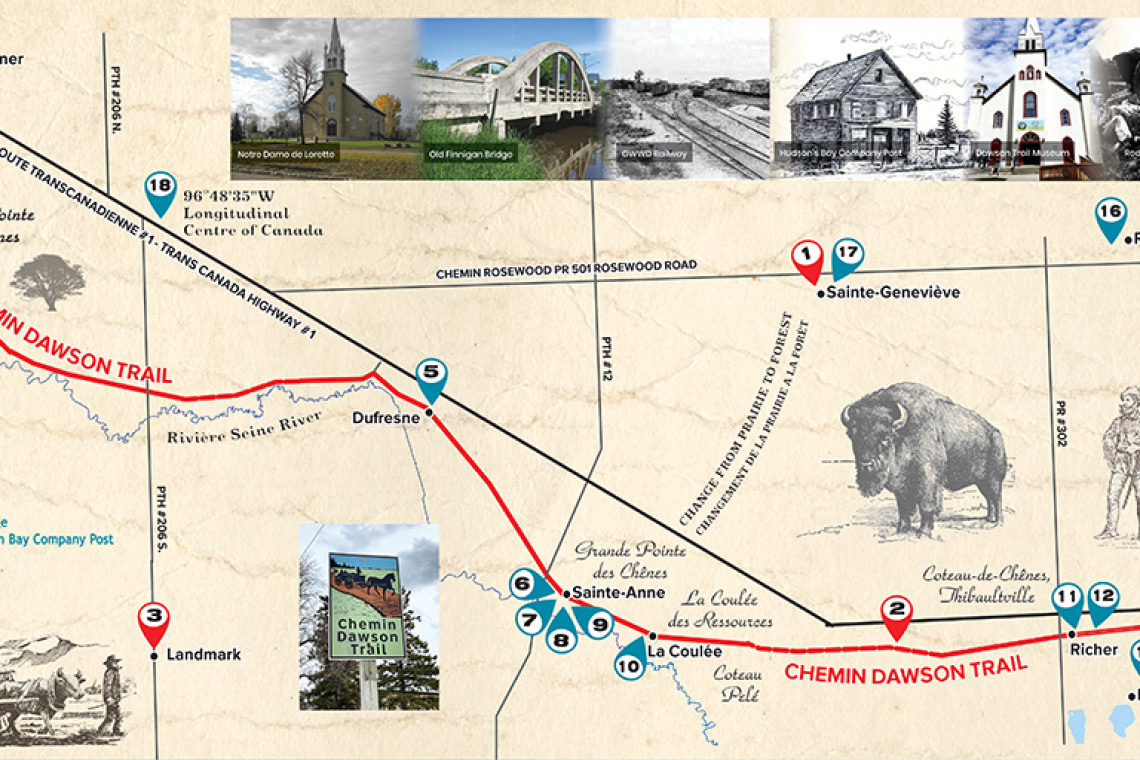Museums and historic sites, Outdoor, Park, trails and beaches
Un survol du sentier historique au cours des années.
If you’ve ever visited southeast Manitoba, you’ve probably driven along the Dawson Trail. Today, the Dawson Trail is best known as a highway that connects the bilingual communities of Ste. Anne, Lorette, and Richer to the City of Winnipeg. But did you know that the Dawson Trail also refers to a historic passage that represents an integral part of the history of Manitoba, and even Canada as a whole? In this article, we invite you to take a journey back in time to discover the province of Manitoba at the eve of its entry into Confederation.


A visit to Manitoba means travelling through Treaty 1, 2, 3, 4, and 5 territory and communities signatory to Treaties 6 and 10, the original lands of the Anishinaabeg, Anish-Ininiwak, Dakota, Dené, Iiniwak, and Nehethowuk and the homeland of the Métis Nation. Its ongoing existence is thanks to these ancestors and their present day relatives who continue to love and care for the land.